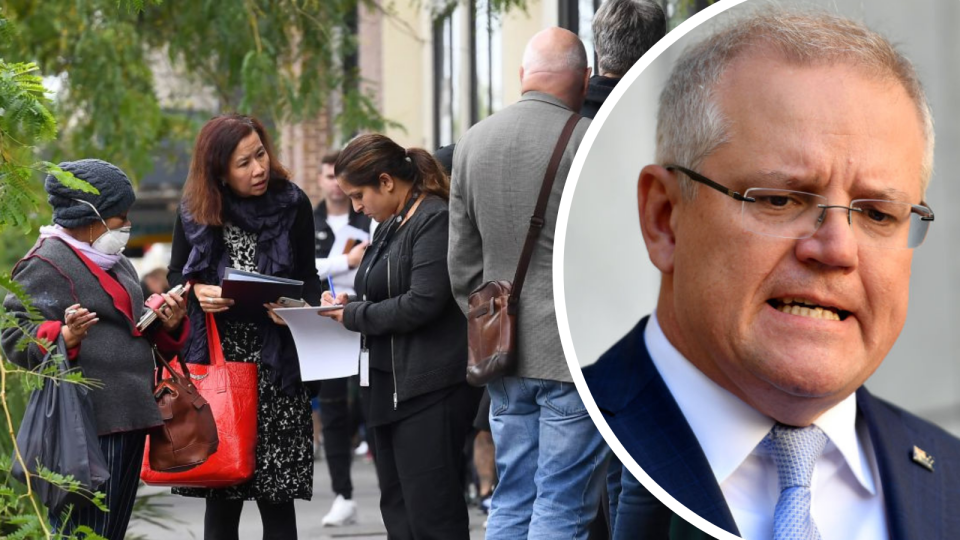'An ugly set of numbers': Jobs market could get worse

The September labour force data show the impact of the recession on jobs, hours worked and unemployment.
It is bad news. Depressing in many ways to realise that there are 937,400 Australians unemployed, a further 1,538,800 underemployed and that since the onset of Covid-19, the workforce participation rate has dropped by 1.3 percentage points as people have given up looking for work.
They are an ugly set of numbers.
In percentage terms, 6.9 per cent of the workforce is unemployed while a futher 11.4 per cent are underemployed.
In other words, that is nearly 2.5 million people or 18.3 per cent of the workforce who are either unemployed or underemployed.
‘In tatters’: Stimulus to come to an end soon
This goes to show that despite the efforts of the Morrison government with initiatives such as JobKeeper, JobSeeker and the various stimulus measures to tackle the economic impact of Covid-19, the labour market is still in tatters and not showing much in the way of a turning point up.
Making things all the more worrying is that these numbers are yet to be impacted by the withdrawal of a huge part of that economic stimulus.
JobKeeper is already being phased out and will not exist by the end of March 2021 while the boost to JobSeeker is also being phased back meaning less money in people’s pockets. These were two policies that did boost the economy, albeit temporarily.
There remains the issue of the so-called mortgage holidays from the banks which have allowed many people in financial difficulty to postpone their mortgage repayments and not be driven into forced selling of their home as they struggle to meet their normal financial obligations.
This has helped the economy, but they too will be drawing to a close in coming months.
More from The Kouk: 'Disconcerting': Australia’s $1 trillion debt explosion exposed
More from The Kouk: Plenty of temporary Government spending but where are the jobs?
More from The Kouk: The Reserve Bank is missing its target – again
And while the policy was flawed in many ways, the decision to allow impacted workers to draw down a total of $20,000 from their superannuation accounts did provide a temporary boost to spending and with that employment.
That scheme ended on 30 September so there will be no more financial boost from that measure.
Complicating the mix further is the seeming impotence of the Reserve Bank of Australia to effectively implement a boost to the economy from stimulatory monetary policy.
Not that all of this is the RBA’s fault, of course.
Official interest rates, at 0.25 per cent, are near zero and there are some complications for banking and financial markets if it were to cut rates to below zero per cent.
This lack of pro-growth monetary policy feeds into the concerns for the economy – and critical the labour market – from here on in.
It’ll get worse before it gets better
Suffice to say, the risks remain that the labour market will get even worse from here before it starts to improve.
An opening up of Victoria and some inter-State borders will help the economy to a point, but there remain huge impediments to a strong and sustained upturn.
When consideration is also taken of the prospect of zero growth in real wages for the next four years, there is a real and growing risk that the economy will be stuck in a high unemployment funk for many years to come.
Make your money work with Yahoo Finance’s daily newsletter. Sign up here and stay on top of the latest money, economy, property and work news.
Follow Yahoo Finance Australia on Facebook, Twitter, Instagram and LinkedIn.

 Yahoo Finance
Yahoo Finance 